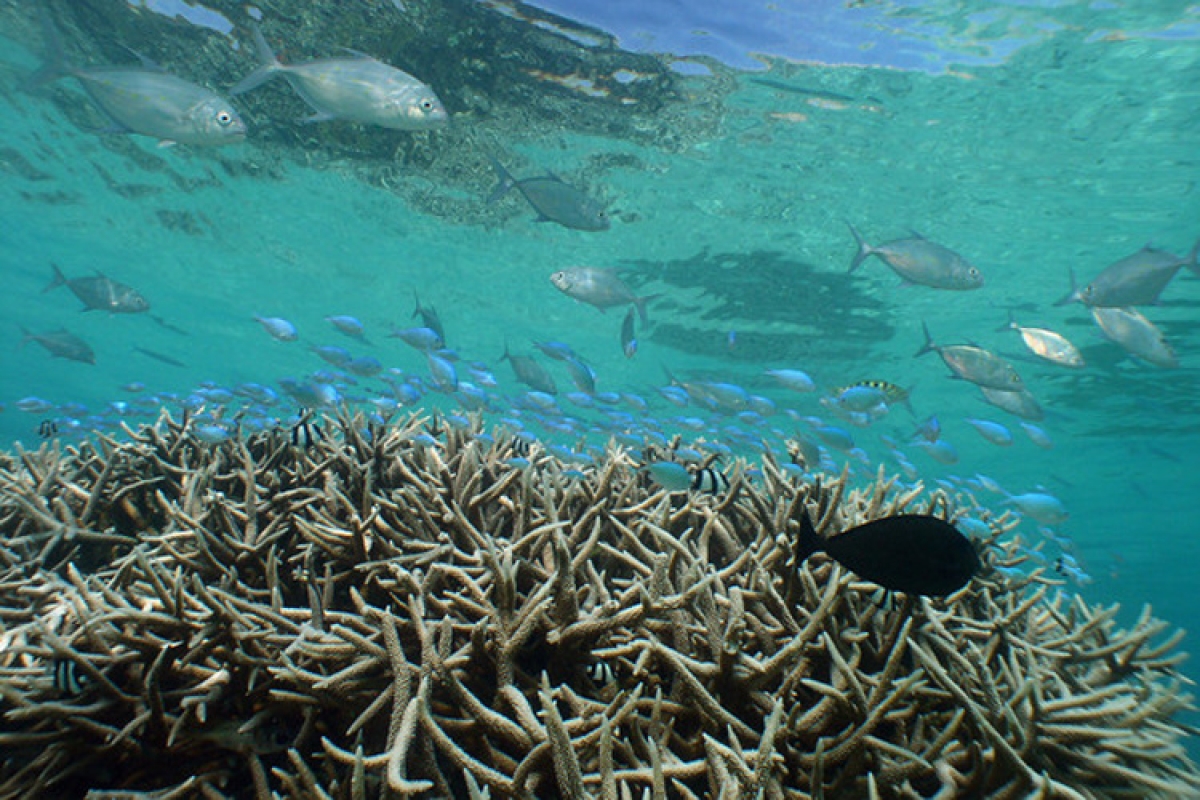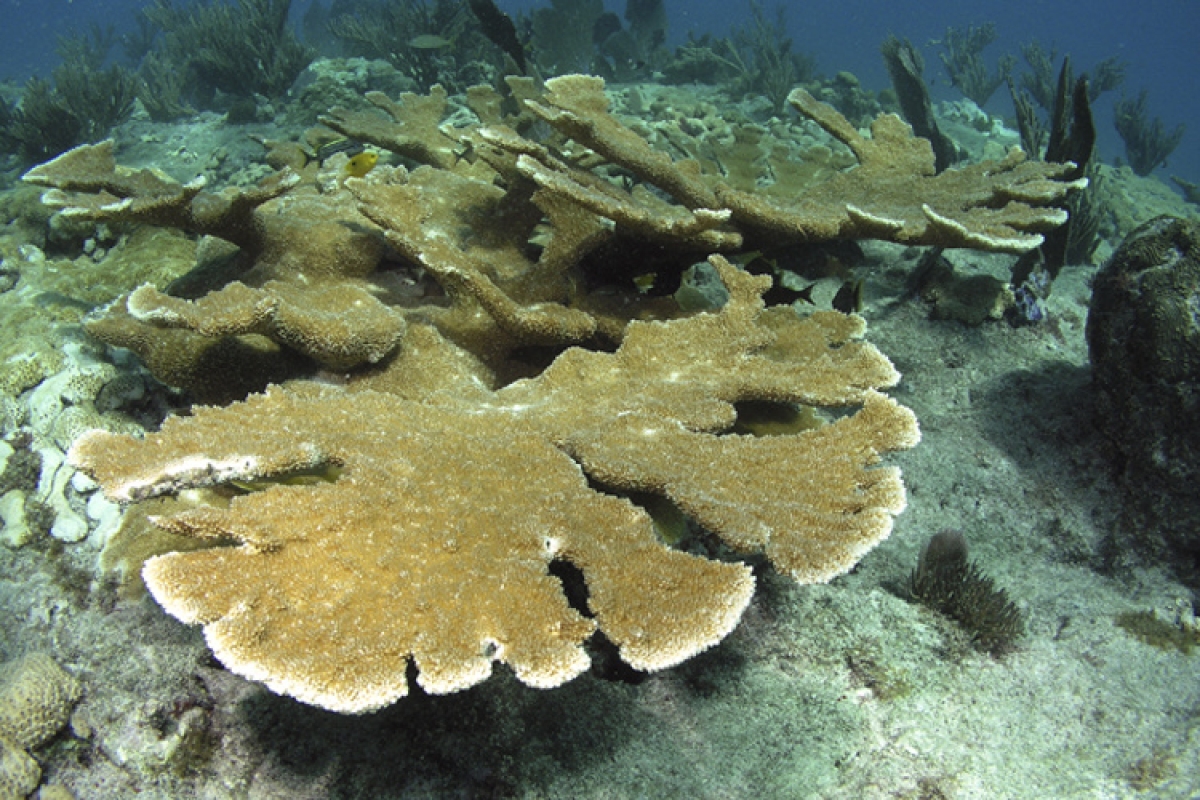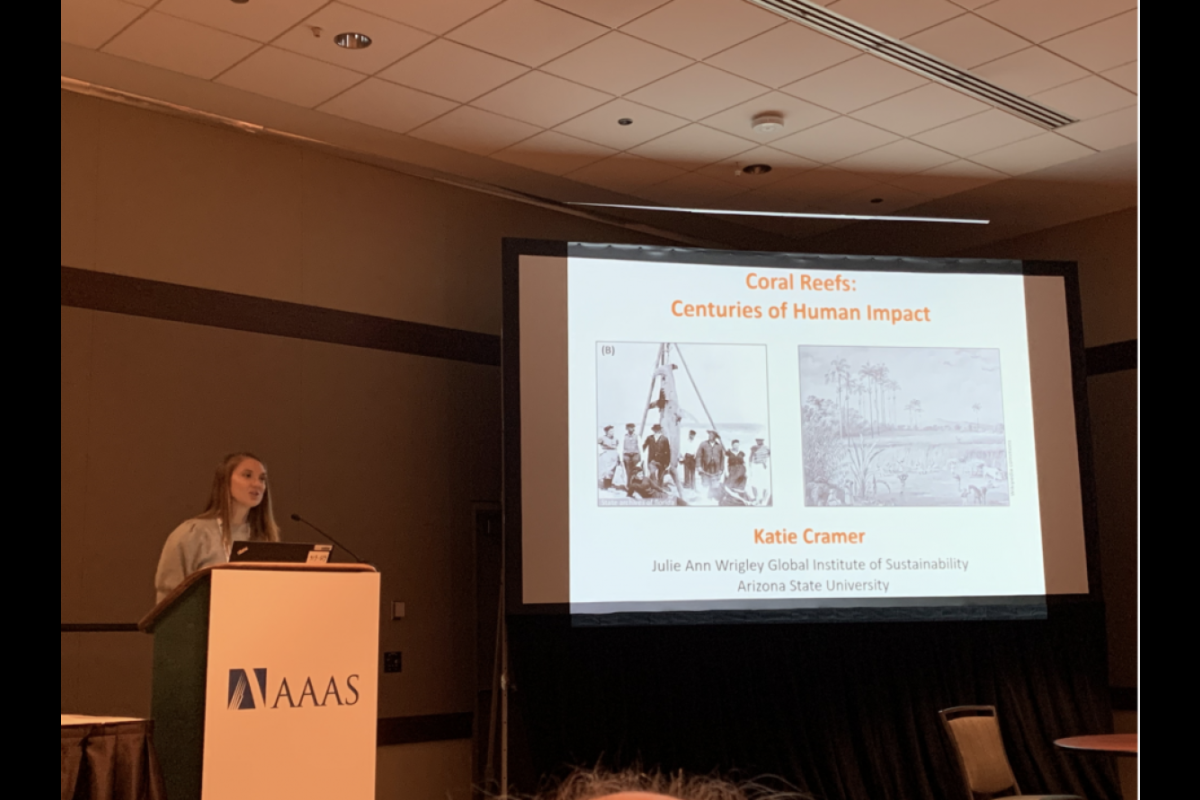Caribbean coral reef decline began in 1950s and '60s from human activities

Not long ago, the azure waters of the Caribbean contained healthy and pristine coral reef environments dominated by the reef-building corals that provide home to one-third of the biodiversity in the region.
But the Caribbean reefs of today pale in comparison to those that existed even just a generation ago. Since researchers began intensively studying these reefs in the 1970s, about one half of Caribbean corals have died. The iconic elkhorn and staghorn corals that once dominated Caribbean reefs have been hardest hit, with only 20% of their populations remaining today.
Although researchers believe climate change, fishing and pollution are to blame, the lack of baseline data prior to the 1970s has made it hard to determine the precise reasons for these coral die-offs. Arizona State University researcher Katie Cramer wanted to document when corals first began dying to better understand the root causes of coral loss.
Now, in a new paper in Science Advances, Cramer has combined fossil data, historical records and underwater survey data to reconstruct the abundance of staghorn and elkhorn corals over the past 125,000 years. She finds that these corals first began declining in the 1950s and '60s, earlier than previously thought. This timing is decades before climate change impacts, indicating that local human impacts like fishing and land-clearing set the stage for the widespread coral declines that are now accelerating in response to warming oceans.
"I am interested in going back to the scene of the crime when humans first began to significantly impact coral reefs centuries ago, to understand when, why and how much reefs have been altered by humans,” said Cramer, an assistant research professor at the Julie Ann Wrigley Global Institute of Sustainability and an Ocean Science Fellow at the Center for Oceans at Conservation International.
The earlier, local roots of declines of elkhorn and staghorn corals in the 1950s and '60s highlight the urgency of mitigating local human impacts on reefs to allow these corals to recover. “In an era where coral reefs are being hit with multiple human stressors at the same time, we need to resolve why and how much coral reefs have changed over human history to inform our responses to the current reef crisis," said Cramer.
“Recent studies are showing that reefs are better able to cope with climate change impacts when they are not also stressed from overfishing and land-based runoff. So let’s get a handle on these tractable problems now to give reefs a better chance of weathering the current climate crisis."
More Environment and sustainability

Mapping the way to harvesting water from air
Earth’s atmosphere contains about 13 trillion tons of water.That’s a lot of water to draw upon to help people who are contending with drought, overtaxed rivers and shrinking aquifers.In fact,…

ASU researchers test environmental risks of tire emissions on Arizona highways
The Greater Phoenix area’s roadway grid system is the envy of urban planners everywhere, and the Arizona Department of Transportation, or ADOT, strives for nothing less than…

A 6-month road repair that only takes 10 days, at a fraction of the cost? It's reality, thanks to ASU concrete research
While Arizona’s infrastructure may be younger than its East Coast counterparts, the effects of aging in a desert climate have begun to take a toll on its roads, bridges and railways. Repairs and…




